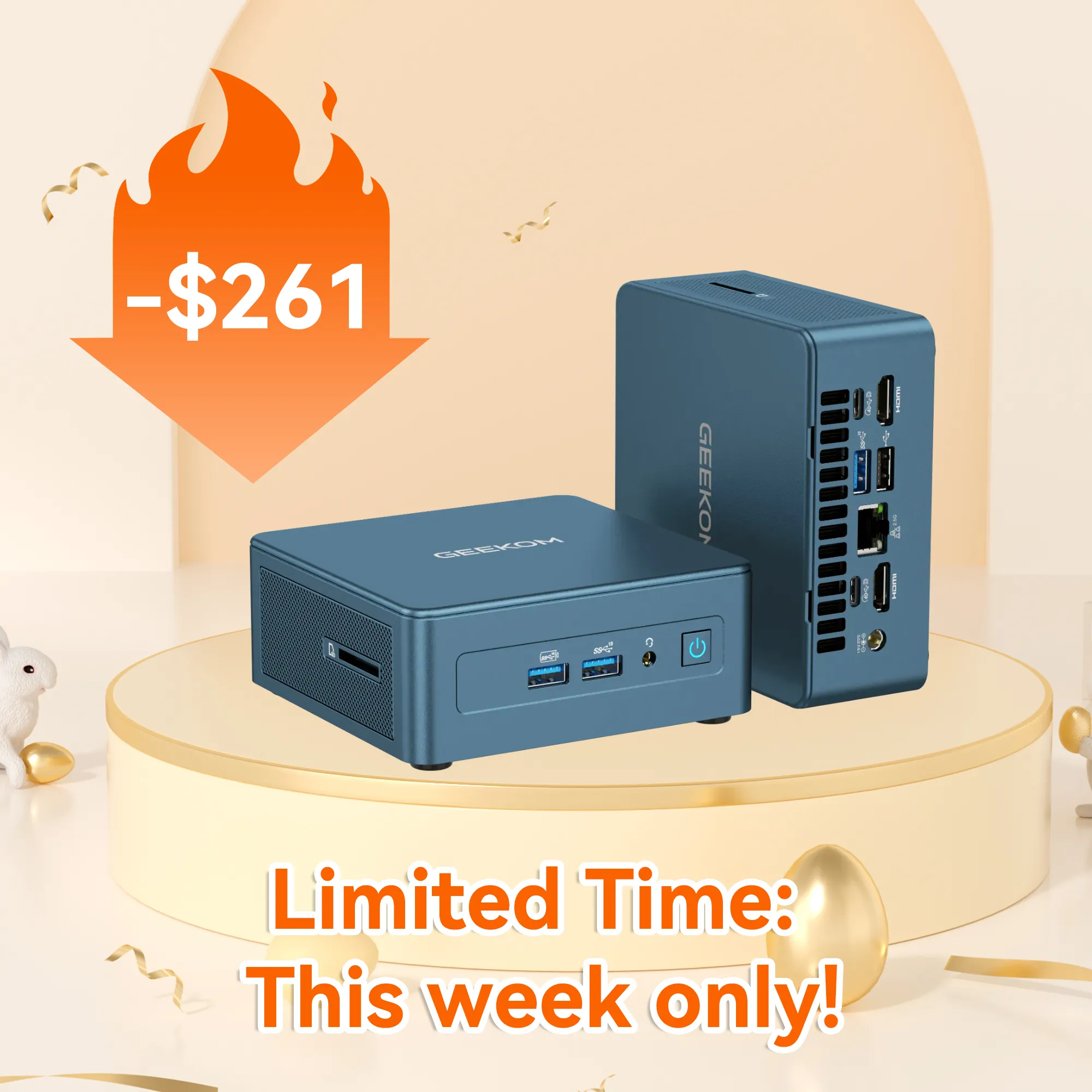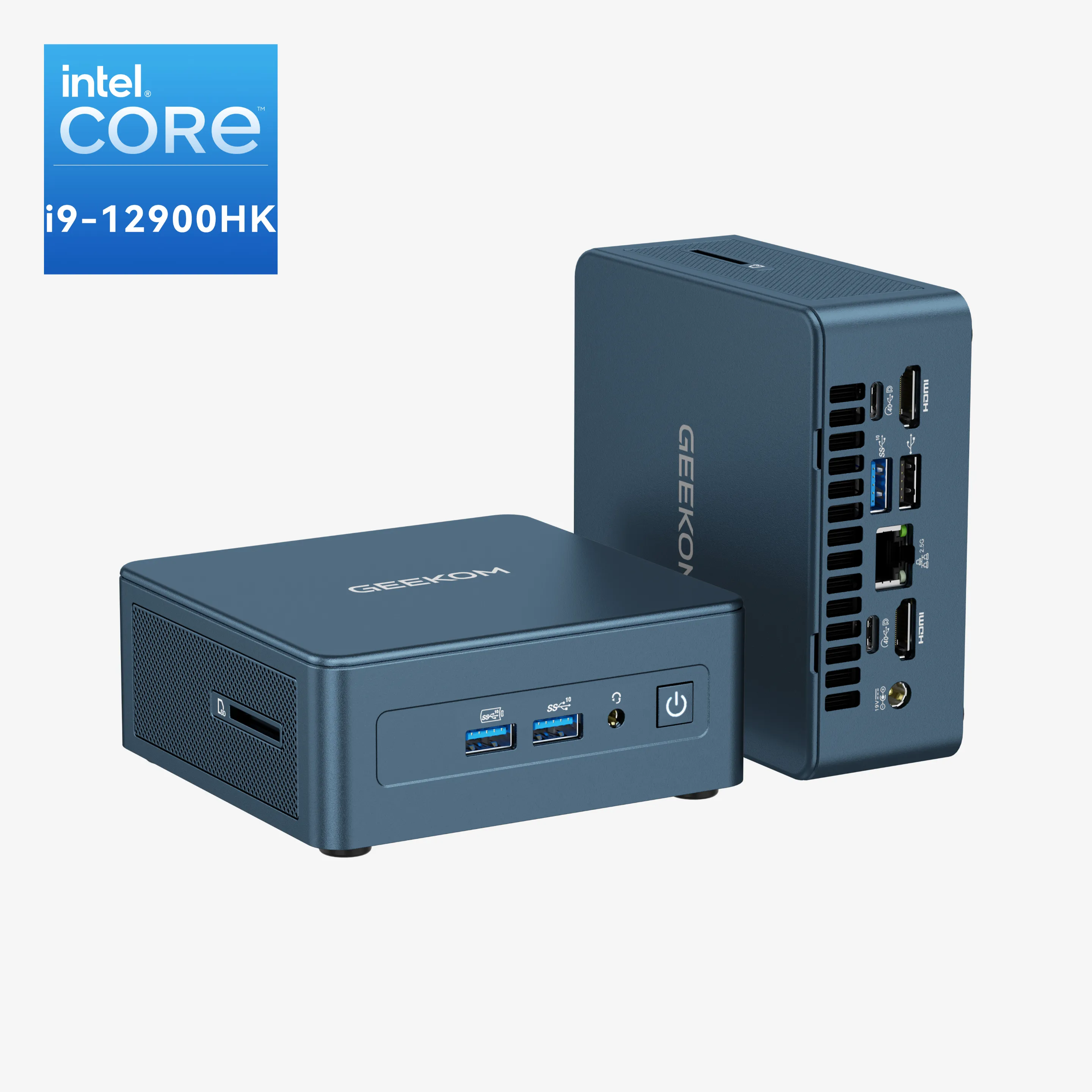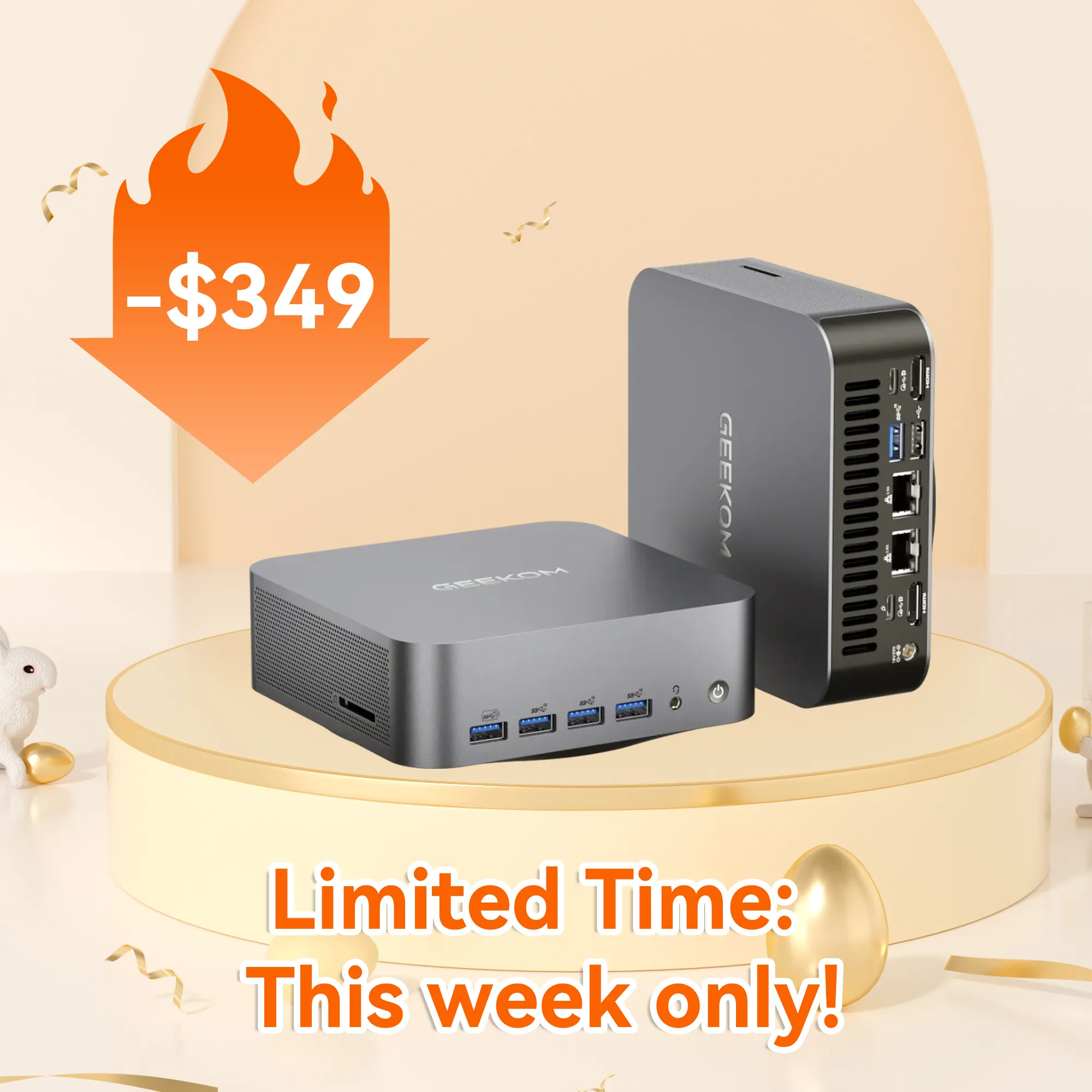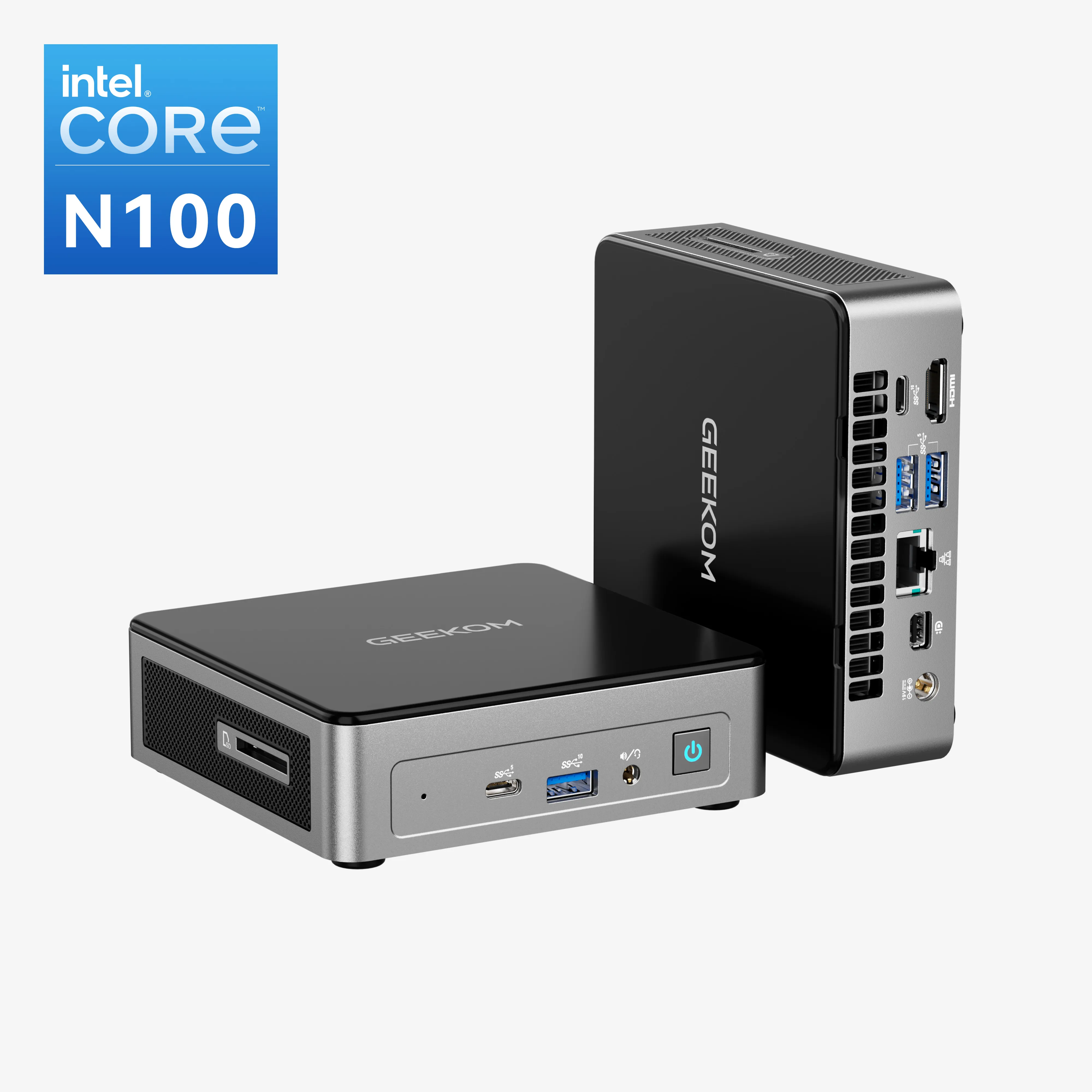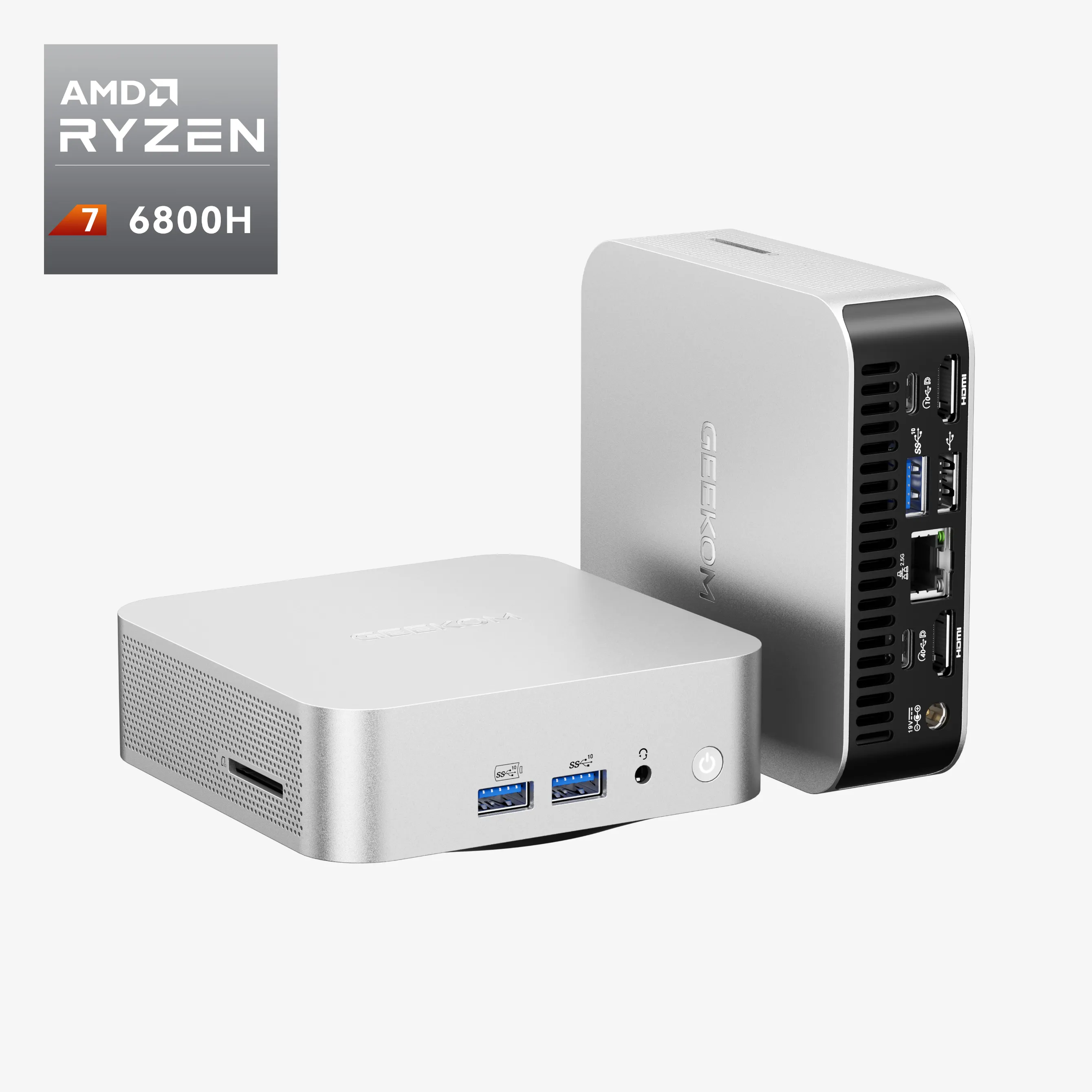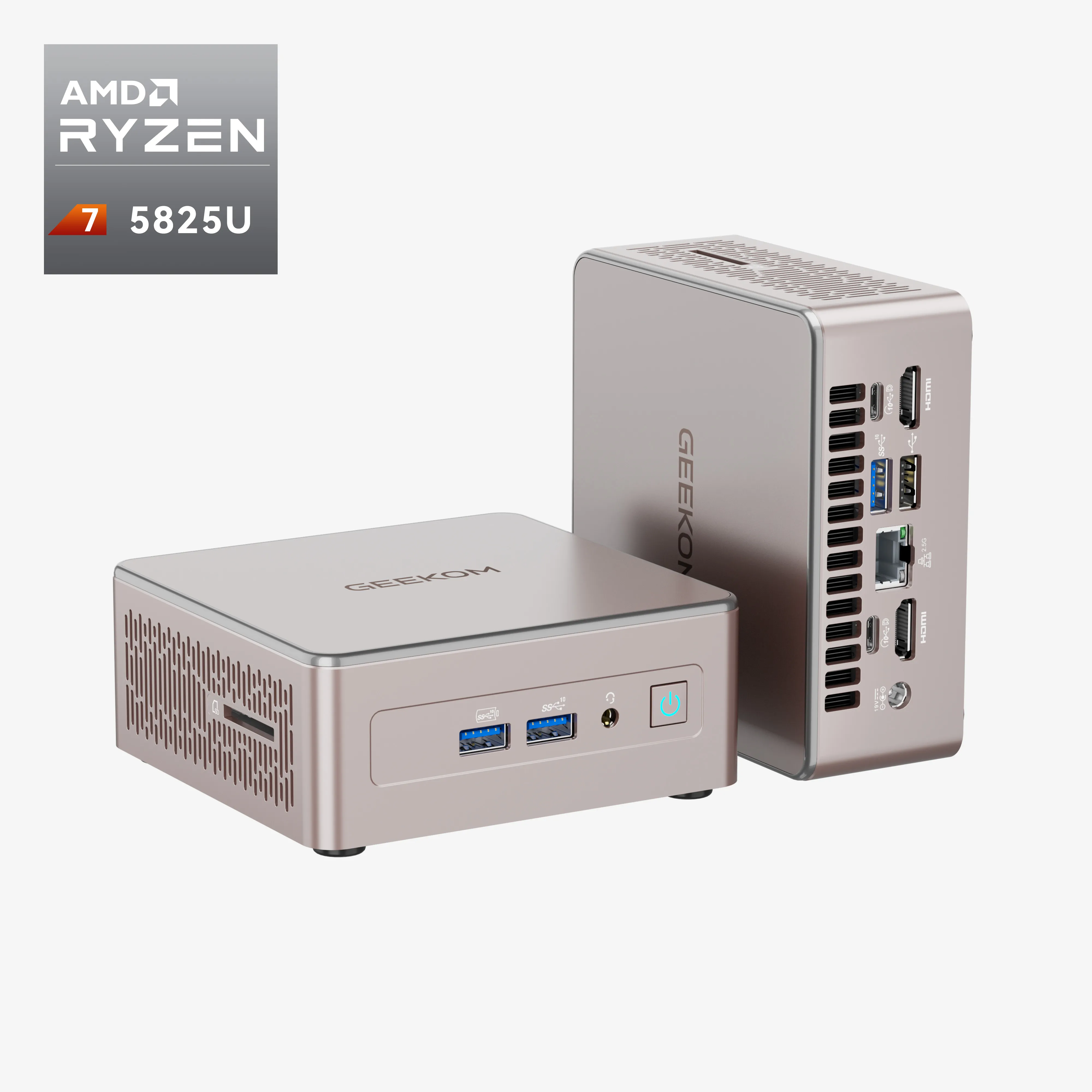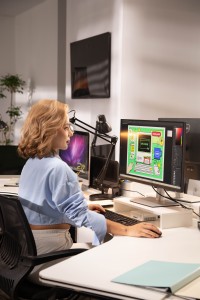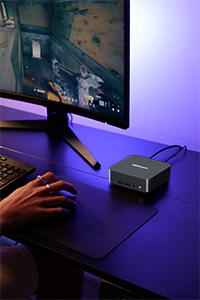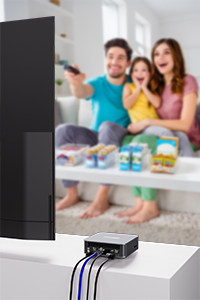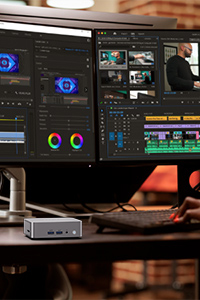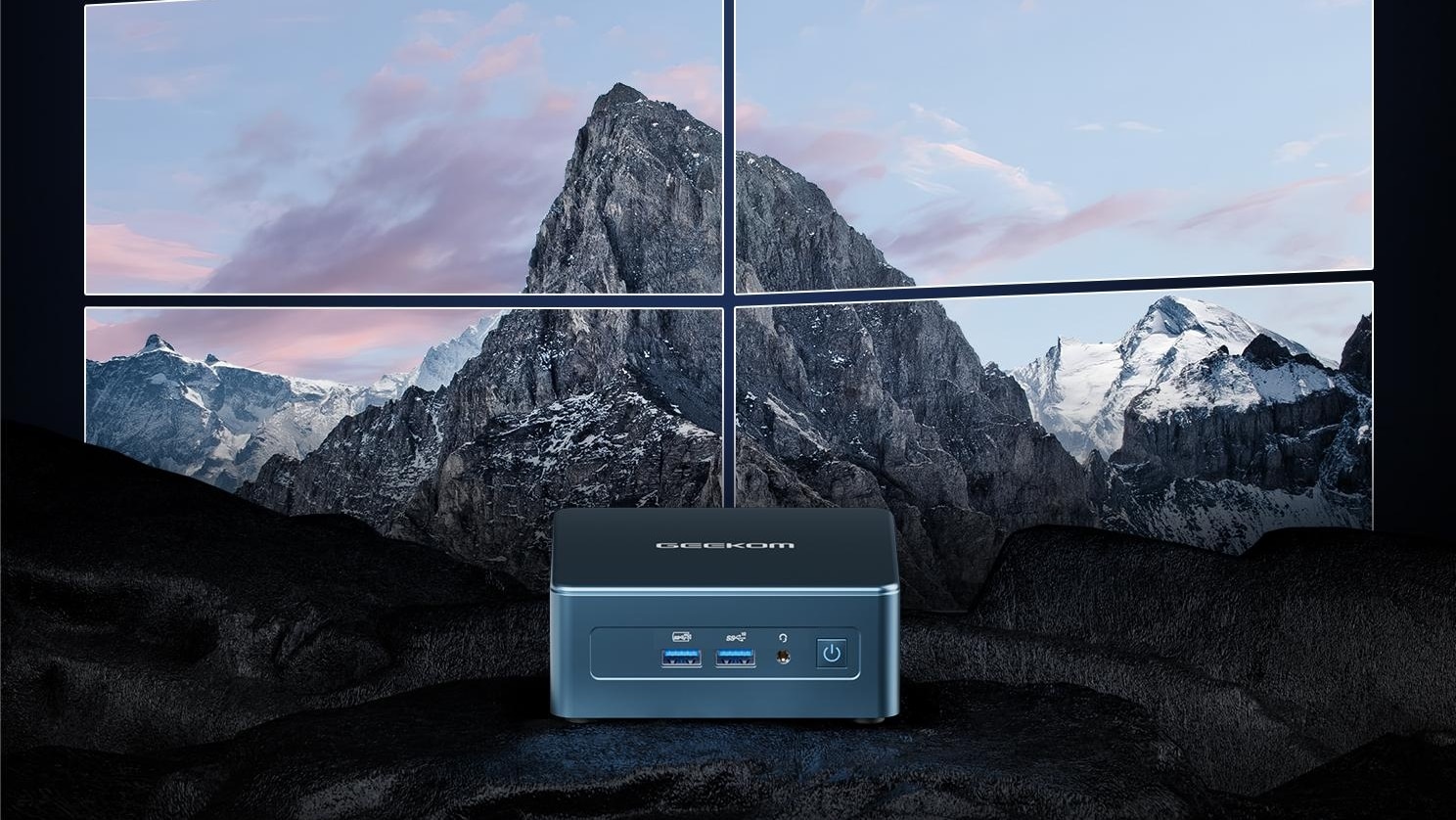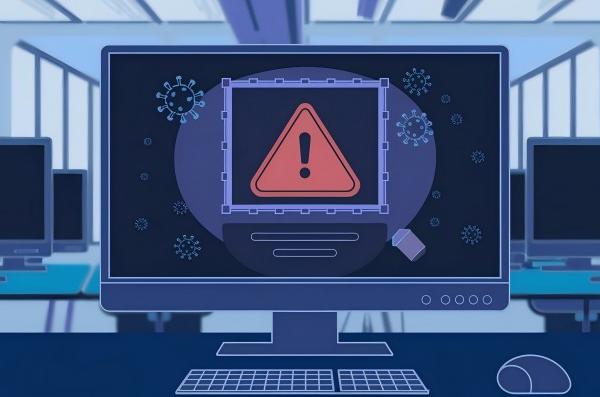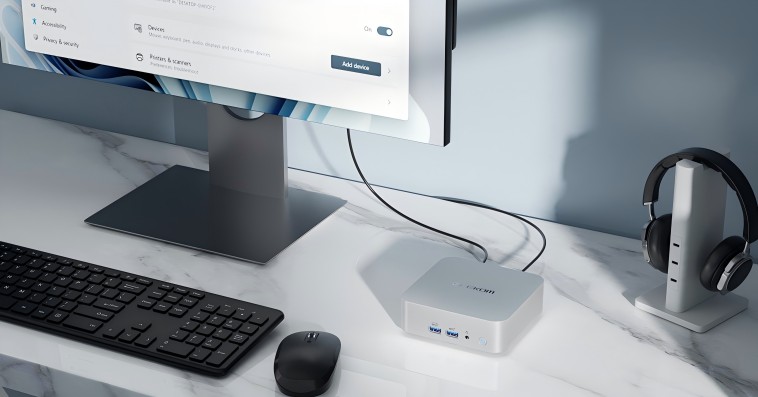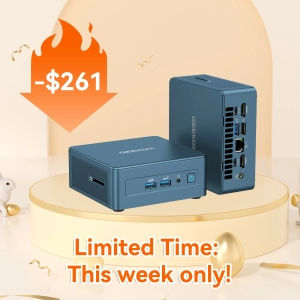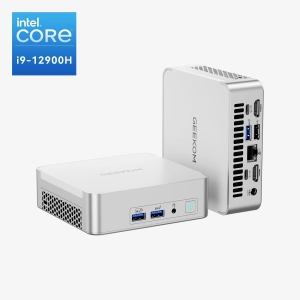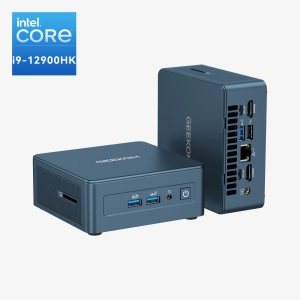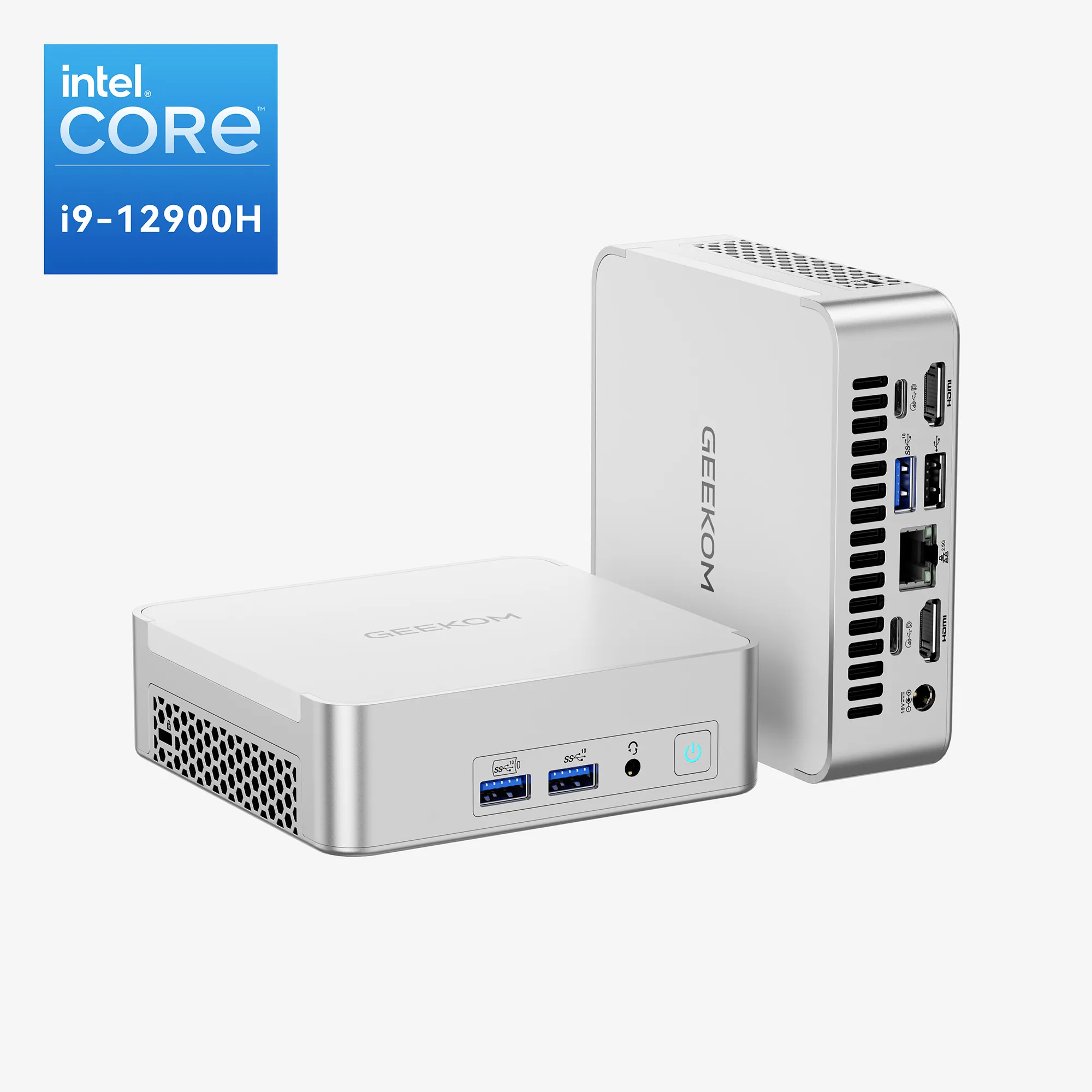As graphic design, photography, videography, and other multimedia creative fields become increasingly reliant on technology, having a portable yet high-performing computer is essential. Mini PCs perfectly fill this need for today’s multimedia creators. Packed with desktop-level capability in a tiny, portable form factor, mini PCs provide unmatched versatility. Here are 5 key reasons mini PCs are indispensable tools for any multimedia creation:
Unmatched Portability
Weighing as little as 2-3 pounds, mini PCs are among the most portable desktop-class machines available. Their compact footprint, often smaller than an average paperback book, allows visual creators to work seamlessly on location without heavy equipment loads.
On-location Photography/Videography
On shoots, a mini PC’s featherweight design means reviewers can easily assess footage directly in the field. Creators can tweak edits, composite initial concepts and get instant client feedback, improving efficiency. No need to haul bulkier laptops or wait until returning to the studio.
Fast-paced Studio Workflow
In busy production studios, mini PCs enable smooth transitioning between projects. Creators can quickly review assets, make changes or present concepts while on the move between shoots and client meetings within the studio facility.
Outdoor/Remote Shoots
For shoots in remote outdoor locations without easy access to power, mini PCs can run for hours on battery alone. Their ruggedized options withstand vibrations and tough environments better than most laptops.
Events and Conference Presentations
During multi-day events, mini PCs remain the perfect portable presentation station. Creators can pitch designs, display timelines and obtain feedback from attendees and potential clients anywhere. No heavy towers are needed that restrict workspace mobility.
Freelance and Remote Work
For remote freelancers, mini PCs are small enough to work on aeroplanes, trains or cafes while travelling between contracts. 4G connectivity turns them into fully functional mobile studios anywhere.
In all, a mini PC’s featherweight size, power efficiency and reliability in variable conditions make it an indispensable tool for creativity requiring computer-based processing on location. Their unmatched portability transforms any space into a makeshift editing studio.
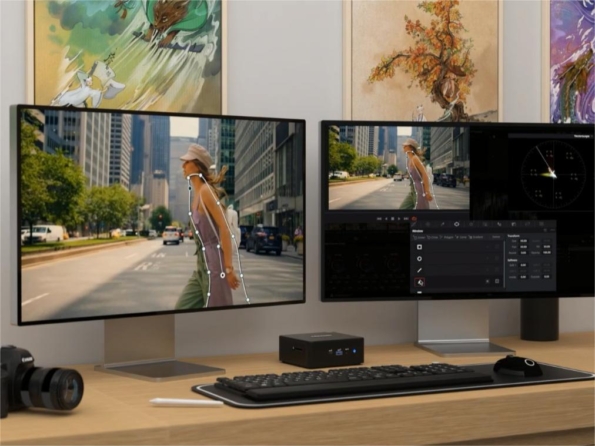
Ultimate Versatility
Mini PCs provide astonishing capabilities behind tiny footprints. Most mini PCs support multiple high-resolution 4K or even 8K displays through abundant ports, facilitating elaborate multi-monitor workflows. Their compact sizes maximize productivity without dominating desk space.
The connectivity of mini PCs also enables attaching external storage, tablets, and specialty input devices, transforming mini PCs into portable production suites. When paired with a keyboard, mouse, drawing tablet, and monitor, mini PCs deliver desktop power anywhere creativity strikes.
Such versatility also supercharges mini PCs for dynamic on-location environments. Photographers can review just-captured shots instantly thanks to rapid SSDs and cutting-edge processors. As portable editing rigs, mini PCs enable immediate image tweaking with Photoshop after shutter clicks, accelerating delivery.
Videographers also benefit during shoots. Mini PCs easily connect to high-end cameras as external recorders, capturing robust video up to 300 MB/s. Some rugged mini PCs even withstand harsh shooting conditions like subzero temperatures.
For creative agencies attending conferences, the mini PC’s multi-display capabilities facilitate impactful multimedia presentations on the go. Despite portable forms, mini PCs readily drive multiple 4K monitors and 8K televisions to vividly showcase creative portfolios for prospective clients.
Whether in the studio, home office, conference room or on location, the condensed desktop power of mini PCs sparks creativity anywhere for photographers, videographers and designers alike. That unmatched versatility is why mini PCs have become essential tools for today’s agile creative professionals.
Desktop-Level Performance
Mini computers have made significant advancements in computing capabilities, now integrating cutting-edge desktop-grade processors and graphics cards comparable to full-tower PC builds. Best-in-class mini PCs feature high core count Intel or AMD CPUs as well as dedicated NVIDIA or AMD mobile graphics that rival and even surpass some bulky desktop setups. This puts immense processing muscle and performance into remarkably compact forms, overturning expectations of what mini PCs can handle.
Those cutting-edge mini PC internals excel at running intensive creative workloads. High core and thread count CPUs breeze through effects-laden 4K and 8K video editing in Adobe Premiere Pro and DaVinci Resolve. GPU acceleration also speeds up work by handling encoding/decoding video formats, enabling real-time previewing of complex timelines. Modelers and animators benefit from the same resources in Blender, Cinema4D, Maya and other 3D tools using GPU acceleration for previewing and physics simulations. AR/VR development also relies on robust GPUs which modern mini PCs deliver despite portable sizes.
Thunderbolt 4 connectivity provides fast 40 Gb/s pipelines for shovelling high-resolution imagery and video to and from external drives. This makes managing 8K projects with massive file sizes smooth on mini PCs. External graphics over Thunderbolt 4 also help mini PCs tackle demanding 3D rendering or AI-accelerated workflows.
So don’t let the miniature statures of mini PCs fool you – they contain formidable desktop processing and graphics performance rivalling traditional towering workstations. Mini PCs handily take on editing high-resolution footage in Adobe Premiere Rush and Premiere Pro, doing complex 3D modelling in Cinema4D and Blender, building intricate Photoshop composites with many layers, and compiling immersive 360 VR environments. Workflows once confined to the desk readily run on location with a potent mini PC. That raw power condensed into ultra-portable sizes gives visual creators unmatched flexibility.
Robust Connectivity
Modern mini PCs offer well-rounded wired connectivity and wireless capabilities that profoundly impact creative workflows. Built-in WiFi and Bluetooth enable creators to access cloud-based tools, transfer files, and manage projects seamlessly from any location. No longer tethered to desks by cables, creators can fully utilize mini PCs from home media rooms, client offices, and on-location shoots.
Bluetooth streamlines connecting to input devices like drawing tablets, allowing fine-tuned creative control anywhere inspiration strikes. Built-in WiFi facilitates leveraging cloud-hosted apps for reviewing edits and animatics. Entire creative teams can provide feedback in real-time over the cloud through mini PC connectivity. This simplifies collaborations across potential geographical barriers.
Integrated WiFi also enables using phones and tablets as additional input devices thanks to apps. Mini PCs can mirror mobile screens wirelessly with just a click, great for client walkthroughs. Design iterations kick into high gear by mirroring tablets to utilize touch and Apple Pencil for rapid sketching reviews. Further refinement then easily continues on the mini PC itself using drawing tablets and large displays.
Robust wired connectivity cements mini PCs as creative powerhouses too. Thunderbolt 4 ports provide lightning 40 Gb/s transfer speeds to external SSDs. This proves invaluable for working with beefy 8K video footage and massive asset libraries. Thin and light Thunderbolt 4 cables also reduce cable clutter versus older generations. Numerous USB-A ports welcome existing creative peripherals without the need for dongles. Taken together, modern mini PCs deliver the thoroughly connected experience that 21st-century visual work demands – no strings attached.
Budget-Friendly Investment
Compared to bulky full-tower desktops, mini PCs with equivalent specifications cost notably less while delivering vastly superior portability. For example, a potent 11th Gen Intel NUC houses an 8-core i7 processor, 32GB RAM, 1TB SSD and Thunderbolt 4 — all within a 0.7 liter chassis — for $1,149. Compared to creaking full ATX towers taking up entire desks for similar performance, mini PCs prove much friendlier on equipment budgets.
The small footprint of mini PCs translates to workspace cost savings too. Mini PCs consolidate into compact, clutter-free work areas versus sprawling desktop towers demanding acres of desk real estate. Their tiny profiles also integrate into travel bags, cutting luggage costs for on-location shoots.
Many mini PCs even tout extensive expandability despite small sizes and future-proofing investments down the road. Additional storage, RAM, and I/O can extend lifespans for years as performance demands grow. Thunderbolt 4 and USB 3.2 Gen 2 ports also ensure zippy speeds with next-gen peripherals.
In conclusion, mini PCs should rank as essential tools for any visual creator who values both mobility and performance. Their lightweight versatility optimizes workflows from anywhere, literally placing immense desktop-level power in the creators’ hands. Compared to traditional desktop towers, mini PCs’ compelling cost savings multiply those productivity benefits even further.
Final Thoughts
Mini PCs have become indispensable creative tools for today’s increasingly untethered visual professionals. Blending robust desktop-level power, versatile connections, extreme portability, and resilience, mini PCs excel across all environments – photoshoots, studios, remote work, and everywhere in between.
At GEEKOM, we produce mini PC with versatile dynamism, affordability and unparalleled portability, making them essential instruments for photographers, videographers and all visual creators needing unconstrained capability on the move.
FAQ
What are the recommended specs for a mini PC intended for creative visualization work?
With the following recommended specifications, a mini PC will provide the essential processing power, graphics capability, memory, fast storage, and connectivity to smoothly run demanding creative visualization workloads.
| Feature | Specification | Recommendation |
|---|---|---|
| CPU | 6-core or 8-core, Intel Core i5/i7 or AMD Ryzen 5/7 | Look for 3GHz base clock speed or higher |
| RAM | 16GB to 32GB DDR4 | 16GB minimum, 32GB preferred for intensive workloads |
| Storage | 512GB SSD | NVMe SSD for optimal performance |
| Graphics | Integrated or dedicated GPU | Integrated for basic tasks, dedicated Nvidia RTX or AMD RX for demanding 3D, video editing, and rendering |
| Ports | USB 3.2/USB-C, Thunderbolt 3/4, HDMI 2.0, SD card reader | Additional ports like Ethernet and audio jacks may be desired |
| OS | Windows 10/11 Pro | Windows for flexibility |
| Wireless | WiFi 6 and Bluetooth 5.0+ | Ensures fast and reliable wireless connectivity |



